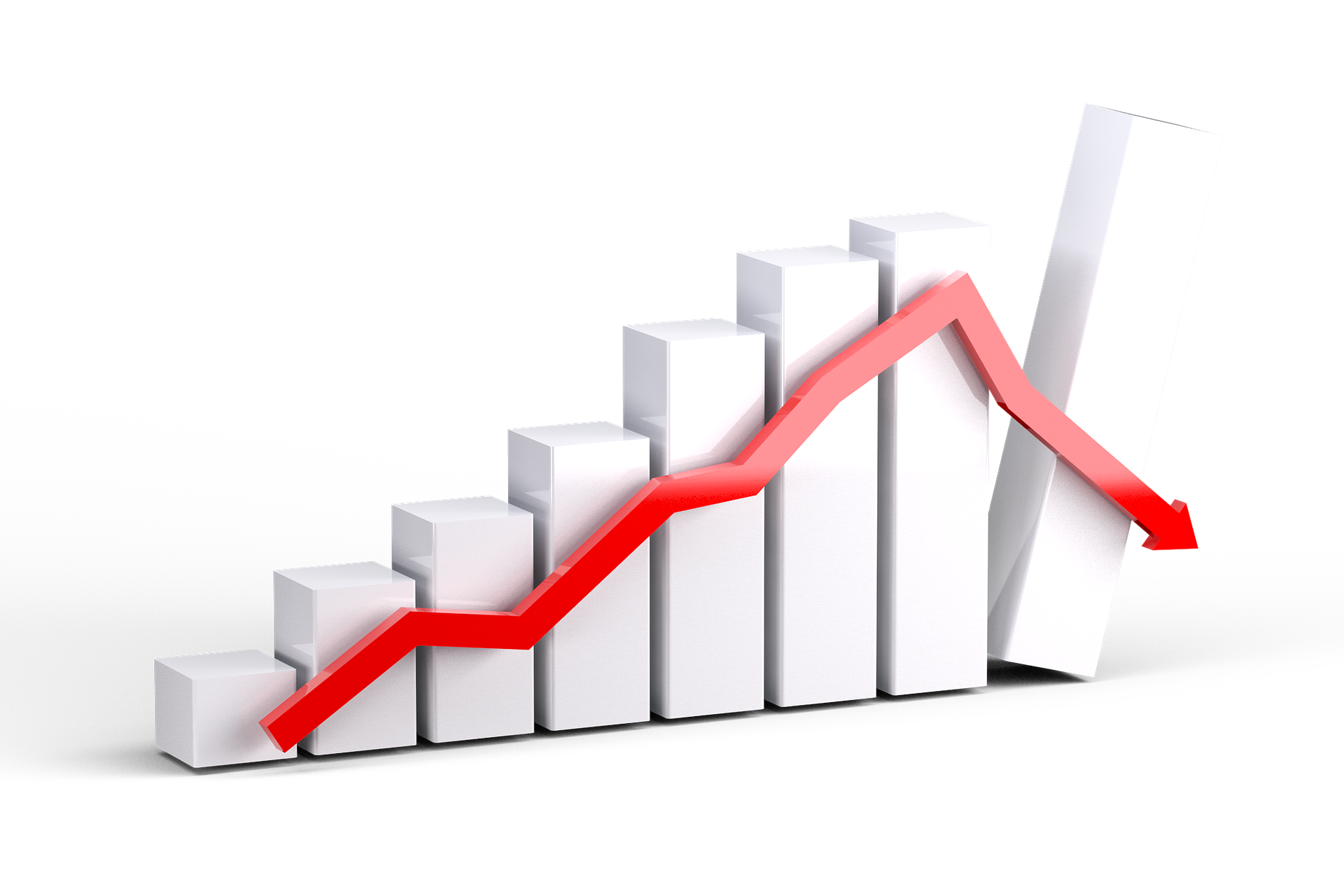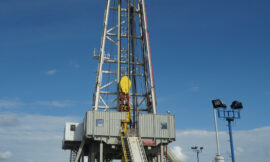The price of oil has been subject to many highs and lows since the start of the modern petroleum industry. These gyrations in price are sometime referred to as a oil price boom (high prices) or oil price bust (low prices). In this episode, we discuss some of the major booms and busts in the price of crude oil, what caused them, and what we can learn from these past crude oil boom and bust cycles. Finally, we end with a prediction that we may have seen the end of the wild and long-lived boom and bust cycles within the oil industry. Listen to the end to find out why!
Be sure to also subscribe on Apple Podcasts via the link above and please leave us an honest rating and review. We read every one of them and sincerely appreciate any feedback you have. To ask us a question to be featured on an upcoming episode, please leave a comment below or send an email to feedback@mineralrightspodcast.com.
How it Began
George Bissell and Edwin L. Drake drilled the first successful oil well on August 27, 1859, near Titusville, Pennsylvania. Price volatility in the oil and natural gas markets has existed ever since then. In fact, it only took two years for the first downturn in the price of oil or what is affectionately known as a bust cycle in the industry. This first bust occurred around November 1861 because the market entered into an oversupply situation. In fact, “production in western Pennsylvania rose rapidly — from about 450,000 barrels in 1860 to 3 million barrels in 1862” (Yergin, D. (1992). The Prize: The Epic Quest for Oil, Money & Power. Touchstone.). This caused prices to crash from $10 per barrel in January of 1861 down to 10 cents per barrel by the end of that year. As demand rose, prices soared again which incentivized more investment in additional drilling which led to another temporary boom. This overproduction of oil again led to another bust. This boom and bust cycle is a familiar situation in the oil industry.
What Causes Oil Prices to Fluctuate
The reason that the industry is so cyclical is because there is a lag between capital investment and when those projects begin generating revenue. In the case of the oil and gas industry, the capital investment is on drilling new wells and the infrastructure to support the additional production volumes. While the onshore oil and gas industry is fairly nimble and in a best case scenario it may only take a few months between when an investment in a new well is made to when that investment begins to generate a return. In other cases, as with offshore oil and gas exploration, it may take almost a decade between when a major investment decision is made to when that project begins producing oil and gas and thus starts generating a return.
Typical Stages in the Crude Oil Price Cycle
Before we highlight a few of the other notable boom and bust cycles in the industry, Robert Rapier, an industry analyst characterized the oil industry’s boom and bust cycle to have 5 typical stages:
- Stage 1. Represents the bottom of the price cycle. In this stage, there is “excess oil supply which results in low oil prices and a period of under-investment by the oil industry”. As you may remember from Economics 101, low prices often stimulates higher demand and the oil market is no different.
- Stage 2. Is where “demand grows faster than supply, leading to a tightening supply/demand balance.” This causes oil prices to start to rise.
- Stage 3. “Rising oil prices mean oil companies start making money, and they ramp up investments in new projects.” As you can imagine, the higher the prices go and the length of time they stay high will spur larger and larger investments. In the oil and gas industry, producers make decisions as to whether or not to drill new wells based on economics. As new oil plays become economical, investment is then made into these new areas that were not previously economic to drill. In the past, companies often were able to “employ a lot of financial leverage”, which works fine until it doesn’t.
- Stage 4. Where “higher [oil] prices curb demand growth”, meanwhile new investments that were made at the end of Stage 2 and beginning of Stage 3 begin to come online. This causes “production growth to begin to outstrip demand growth.”
- Stage 5: Another bust or “price collapse”, which causes the industry to significantly reduce capital expenditures (spending). This brings us full circle back to Stage 1.
Abbreviated History of Oil Industry Boom and Bust Cycles
We won’t cover them all but here are a few notable oil price booms and busts.
Early 1900’s
- The Spindletop discovery in East Texas was the first major discovery in the state. It occurred near Beaumont, Texas where Patillo Higgins and Captain Anthony F. Lucas drilled a gusher on January 10, 1901. The well produced 100,000 barrels per day which by any terms is a lot of oil. After Spindletop, the oil rush in Texas began causing people from all across the country to go there in hopes of striking it rich.
- In the meantime, large discoveries were made in Texas and Louisiana as well as the great Glenn Pool discovery near Tulsa Oklahoma in 1905. This boom spread to West Texas and this period of economic prosperity quickly changed as the great depression in the 1930’s led to a drop in demand. We were faced with stage 5 of the price cycle and the price of oil collapsed.
Did You Know? Oklahoma was actually the largest producer in the region from around 1906 until 1928 when Texas reclaimed the title that it still holds today.
Mid 1900’s
- Following the great depression, oil prices remained somewhat depressed hovering around $20/bbl (adjusted for inflation) until the 1970’s. During the first half of the 20th century, major oil producers cooperated to restrict supply to compensate for the massive exploitation of the oil fields in the middle east (Saudi Arabia, Iraq, and Iran) so that there would not be a global supply glut.
- In 1960, oil producing countries in Latin America and the Middle East formed the Organization of Petroleum Exporting Countries (OPEC) to try to gain more control over the oil markets from these major oil companies. This worked for a time until OPEC became the dominant force in controlling oil prices. This balance of power between the what was termed the “seven sisters” – the major oil companies including Exxon, Mobil, Chevron, Gulf, Texaco, British PEtroleum, and Shell shifted to OPEC.
- One of the factors that contributed to this shift in the balance of power was the decrease in market share by the United states. In 1950, half the world’s oil came from the US and this fell to 18% by 1973.
- Geopolitical forces reared their ugly head in the 1970’s in response to the US support of Israel and the rise in power of Arab oil states. This provided the backdrop for the first oil shock of 1973-1974 as the US became dependent on foreign oil imports. Another crisis in the middle east caused another oil embargo on the United States which this time had a significant impact due to a 400 percent increase in the price of oil. This shock cause a recession worse than any since WWII and highlighted the vulnerability of the United States to foreign disruption to oil supply.
Late 1900’s and Early 2000’s
- The next Bust occurred in 1986 when Saudi Arabia flooded the market with cheap crude oil which caused prices to crash.
- From then on, OPEC has exerted more restraint and prices remained mostly depressed through the 1990’s until the early 2000’s.
- The rapid rise in demand in the early 2000’s caused prices to spike gain between 2007 and 2015 with a correction in 2008 due to the financial crisis.
- The shale revolution which really took hold in the past decade was in response to high prices and the industry looking to exploit previously uneconomic resources like shales. The advent of hydraulic fracturing in combination with horizontal drilling revolutionized the industry. Mitchell Energy used this new technique in 1997 on a well in the Barnett Shale which unlocked these new sources of oil and natural gas. In fact the shale gas industry grew rapidly between 2005 and 2010 with an average growth rate of 45% per year during this time period.
- This leads us to the latest boom and bust cycle which we saw the low point in early 2016 with a recovery again at the end of 2019. This was followed by a rapid drop in oil prices in early 2020 due to the sudden drop in demand caused by the Coronavirus pandemic.
- We’re experiencing the latest boom cycle as we speak (late 2021) with West Texas Intermediate (WTI) crude oil price hovering around $80/bbl. I have hopes that any major corrections won’t be as severe as we saw in the past. While the balance of power has shifted significantly back towards the US following the shale revolution, future prices will still be heavily influenced by geopolitics and actions by OPEC+ countries. Let’s hope that the U.S. can maintain its current status as a major oil producer.
Why Low Prices Are Important
This vicious circle seems to be the norm in industries like oil and other commodities where there is a lag between investment and production.
This may all seem very negative but there is one silver lining to all of this. That is, it forces companies to cut costs and become more efficient in order to survive and generate cash flow during lean times. Historically, this was the case in the industry but in the past we seemed to forget history and when prices rose again, companies forgot about the need to be lean and efficient and they allowed expenses to rise alongside oil prices. Now some of this is unavoidable, one of the major costs that operators have to deal with are service companies that provide the drilling rigs and other equipment and manpower to drill the actual oil wells. When demand is high (due to high oil prices), they can charge higher rates for these products and services. These drilling and completions costs have the biggest impact on the economics of new oil wells.
Another area where operators look to trim costs is in the area of operating expenses. This includes overhead, equipment, services, and materials required to operate and maintain existing facilities and wells.
This Time it’s Different
I think we may be seeing the end of the typical boom and bust cycle within the oil industry. This is because I believe we’ve experienced a major structural change in the industry, at least in the United States as operators are now forced to live within cash flow due to limited access to capital, certainly in comparison to the past. One of the benefits of this limited access to capital is that it means that companies can’t be as exuberant in spending during high oil prices. They may increase spending commensurate with the increased cash flow that they experience but they are no longer getting a blank check from investors to spend however they like.
Another factor that is changing the industry is the push to reduce CO2 and methane emissions. Many companies are investing heavily in renewables and this is causing some downward pressure on demand as many companies are looking at alternatives to fossil fuels for transportation and power generation, which are two large sources of demand.
Finally, oil companies are looking towards technology to help streamline their operations. By leveraging concepts like lean manufacturing, process, and data management will allow them to become more efficient than in the past.
While the oil and gas industry will always be subject to major macro economic trends, I think that the capital discipline that the industry is now demonstrating will dampen out some of the price volatility that we saw in the past. An exception to this will be interference by governments as we saw during the COVID-19 pandemic where widespread economic shutdowns cause a rapid drop in demand for crude oil. This was a temporary scenario that ultimately I think permanently sealed the industry’s access to easy capital but this will help with hopefully lower fluctuations in price and a more economically sustainable industry going forward.
Resources Mentioned in This Episode
- The Prize: The Epic Quest for Oil, Money & Power By Daniel Yergin
- MRP 48: The Secrets Behind the Recent Collapse in Crude Oil Price
- MRP 52: How Crude Oil Prices Work
- MRP 115: Oil & Gas Market Outlook and the Impact on Minerals and Royalties
- MRP 50: How Natural Gas and NGLs are Priced
- An Energy Revolution: 35 Years of Fracking in the Barnett Shale
- The End Of The Oil Price Boom And Bust Cycle
- The Failure Of History: How Oil Has Entered A Brave New World
- OPEC, International Oil, and the United States
Thanks for Listening!
To share your thoughts:
- Leave a comment or question below (we read each one and your question may be featured in a future episode)!
- Ask a question or leave us feedback via email or voicemail: (720) 580-2088.
To help out the show:
Click the Apple Podcasts Logo Above to leave us a rating & review. It really helps us reach those that need to hear this information and only takes a minute. We greatly appreciate it! Plus, you can get a shout out on a future episode!
Thanks again – until next time!





Pingback: MRP 131: A Brief History of Oil and Gas Innovation – The Mineral Rights Podcast